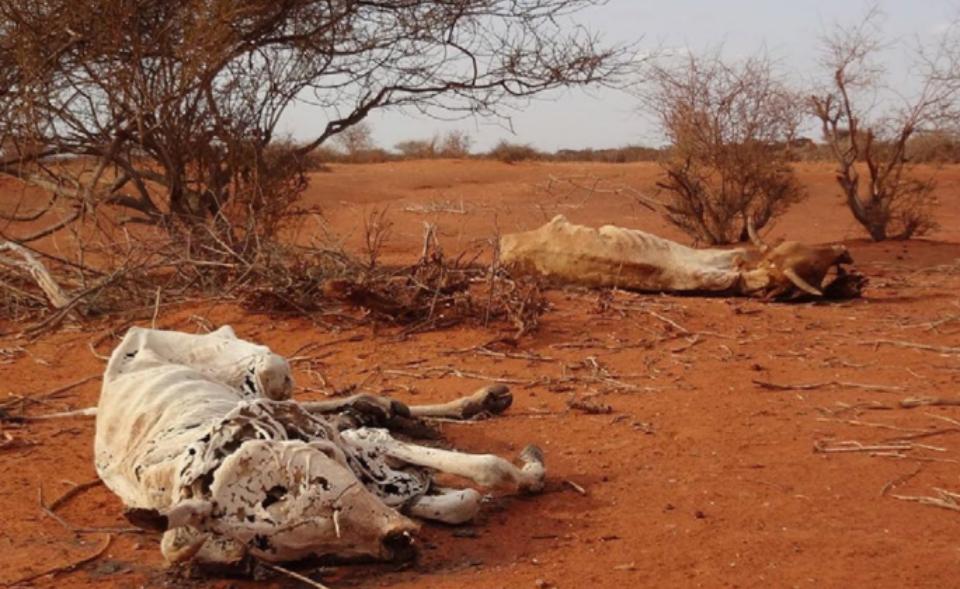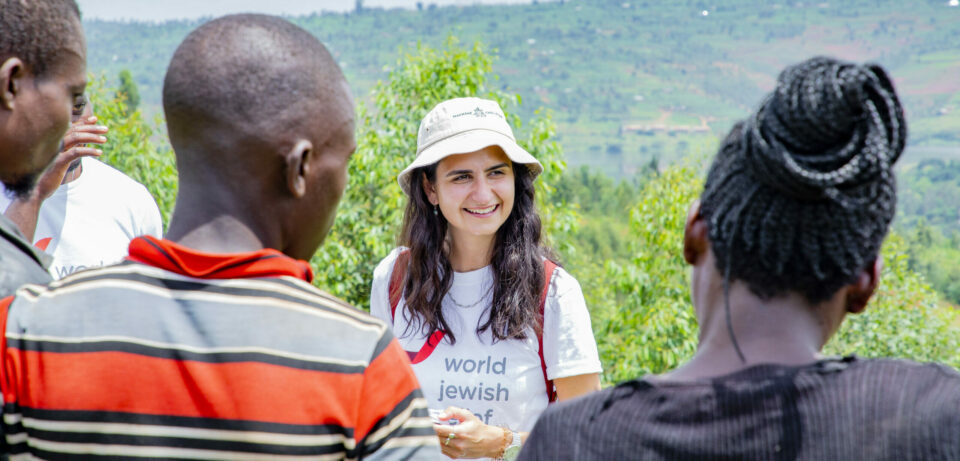Foreword by Rabbi Jonathan Wittenberg
World Jewish Relief has a moving record of turning the ideals of Judaism into practical action. World Jewish Relief takes the core principles of the Torah and the values learnt through the often-painful experiences of Jewish history, and shapes them into programmes of assistance and guidance which reach across the Jewish world and far beyond. The work of World Jewish Relief is a key expression of the Jewish conscience and of our shared universal humanity.
At the core is tzedakah, the root meaning of which is justice. Foremost among the challenges facing the world today is the challenge of climate justice. Every part of the planet will suffer if we do not urgently counteract global warming. But many countries are already experiencing extreme changes, exacerbating the struggle with hunger and destitution, and forcing people to leave their homelands and become climate refugees.
The Torah commands us to behave justly not only at home but to pursue justice proactively in whatever we do. The present paper, set out so clearly by Rabbi Yedidya Sinclair, provides a detailed account of the impacts of the climate crisis on World Jewish Relief’s partner communities, as well as the Jewish imperative for our community to respond. It makes impressive, and humbling, reading.
Last year I participated in several interfaith panels at COP 26 in Glasgow. It was clear that many Muslim and Christian groups are deeply affected by hearing from brother and sister congregations in the global south, including the Pacific, Central Africa and Central America. Jewish communities don’t always have the same immediate close connections. But through World Jewish Relief it is possible for us to engage with those regions and with people who are already experiencing extreme suffering as a result of global warming. We too can have an important role in the urgent task of mitigating the impact of climate change and enabling populations to adapt.
The Torah teaches us not to stand idly by when we witness people struggling. As Jews we know all too well what it means when others remain passive in the face of threats and dangers because they do not perceive themselves as immediately affected. The work of World Jewish Relief enables us to take an active part as a community in supporting both our fellow Jews and other peoples fighting to survive amidst the perils of the climate crisis.
At the heart of Jewish values is the importance of life. Each and every person is at once unique and of equal dignity before God. Every part of creation, for which we are entrusted by God to care in all its rich biodiversity, is irreplaceably precious. We need to do everything we possibly can to protect the future of life itself. Tzedakah is at the centre of this constant, urgent task; World Jewish Relief enables us to engage in it with both skill and moral passion.
1. Why is The Climate Crisis Our Issue?
The Jewish Imperative to Act
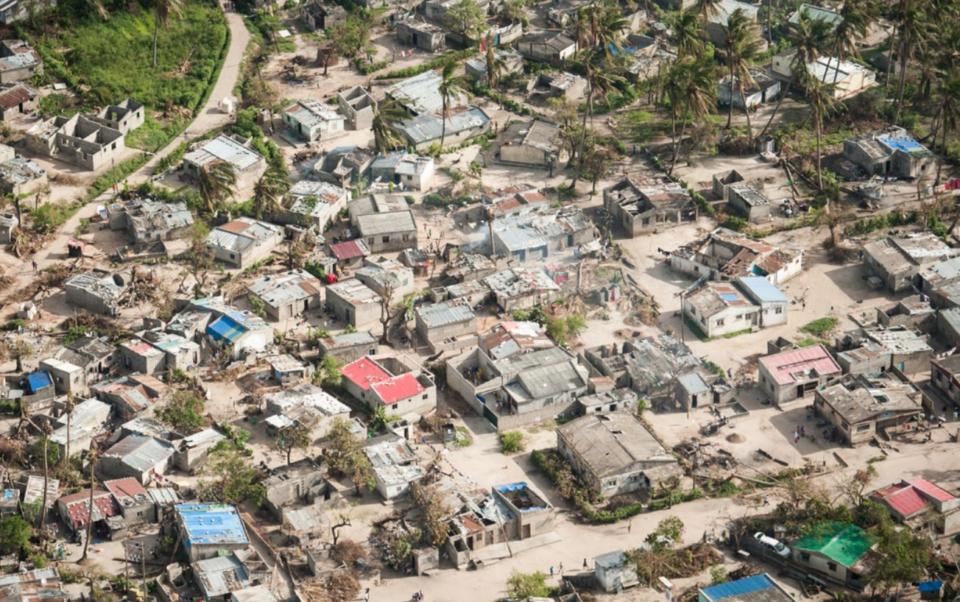
The climate crisis is unprecedented, as the changes we are now experiencing are of an unparalleled rate and scale. Humanity has never had to address anything like this before. Yet, the climate crisis calls on us to act, as Jews, for reasons that are ancient, familiar, and deeply rooted in Jewish tradition.
With our tradition at our fingertips, we can look to our religious texts for guidance in the face of this contemporary challenge. Central Jewish values, including saving life, protecting the weak and vulnerable, not hurting our neighbours, tzedakah, hesed and caring for God’s creation, come into play when we act in response to the climate crisis. These are values that have inspired World Jewish Relief’s work for decades, and they motivate us now as we seek to engage more deeply with the climate issue and its impacts on many of the poorest and most vulnerable people in our world.
Saving Life
Saving life, pikuach nefesh, is a central imperative of Judaism. Each human being is a unique, irreplaceable creation of God, endowed with infinite worth. God commands humankind not to murder, giving the reason that each human being is made in the image of God. (Genesis 9:6), The rabbis say that Saving life overrides almost every prohibition in the Torah. We are told to break Shabbat to save a life, even if there is a mere possibility of life-threatening danger and even if only a few more hours of life are gained by doing so. It is estimated that the climate crisis is already killing up to killing up to 100,000 people per year, matching the World Health Organisation’s projections. Acting to prevent the worst impacts is mandated by the central Jewish value of saving life.
“One who saves a single life, it is as if they have saved the whole world; whereas one who destroys a single life it is as if they have destroyed a whole world.” (Mishnah Sanhedrin 4:5)
Protecting the most vulnerable people, including those who are living in poverty, marginalised people and older people.
The impacts of the climate crisis will fall disproportionately on the world’s most vulnerable people, including people living in poverty, farmers, marginalised groups, women, people affected by conflict, refugees, indigenous groups, young and older people. The Torah repeatedly urges us to look after people who are living in poverty and are vulnerable. In numerous
places, it stresses a particular duty to care for “the stranger, the widow and the orphan,” those on the margins of society,
lacking the social or economic resources for a secure existence.
“The message of the Hebrew Bible is that civilisations survive not by strength but by how they respond to the weak; not by wealth but by how they care for the poor; not by power but by their concern for the powerless.
What renders a culture invulnerable is the compassion it shows to the vulnerable.” (Lord Rabbi Jonathan Sacks, To Heal a Fractured World, p.37)
No less remarkable is the Torah’s emphasis on taking care of the old: “You shall rise before the aged and show deference to the old”, (Leviticus 19:32). In traditional Jewish culture, elders are not relics to be neglected or cast aside, but precious sources of wisdom and experience to be cherished and treasured. As Abraham Joshua Heschel wrote, “A test of a people is how it behaves toward the old. It is easy to love children. Even tyrants and dictators make a point of being fond of children. But the affection and care for the old, the incurable, the helpless are the true gold mines of a culture.” The Insecurity of Freedom, page 72. Responsibility for people living in poverty, vulnerable, marginalised and older people is crystallised in the values of tzedakah (righteous giving) and hesed (lovingkindness) that underpin World Jewish Relief’s work. “We should be more scrupulous about the mitzvah of tzedakah that about any other positive commandment…tzedakah is the distinguishing mark of the descendants of Abraham” (Maimonides, Mishneh Torah, Laws of Gifts to the Poor, 10:1) In other words, Tzedakah is fundamental to what it means to be Jewish.
Jewish Imperative to care for the Earth:
Judaism is a rich repository of environmental wisdom and teaching. Since the awakening of global environmental consciousness around half a century ago, many thinkers have been working to recover ancient Jewish resources for our responsibility to care for the Earth. Here we can allude to just a few key concepts.
Creation
The story of Creation with which the Torah opens describes the Genesis of the cosmos as the willed creation of God. It is a vision of harmony, a garden, in which all creatures have their place and all living species are the beloved handiwork of the Creator, who on completing the task, pronounces the whole project to be “very good”, (Genesis 1:31) Humans are placed into this garden and are told to “work and protect it,” to take care of what God has made. A celebrated midrash elaborates on the duty of stewardship for the world with which God entrusts Adam: “When the Blessed Holy One created the first human, He took him and led him round all the trees of the Garden of Eden and said to him: “Look at My works, how beautiful and praiseworthy they are! And all that I have created, it was for you that I created it. Pay attention that you do not corrupt and destroy My world: if you corrupt it, there is no one to repair it after you.” (Kohelet Rabba, 7:13)
Ba’al Taschit.
The Bible forcefully forbids cutting down fruit trees in a time of war. This prohibition has expanded into a broader environmental ethic: “When you lay siege to a city for a long time, fighting against it to capture it, do not destroy its trees by putting an axe to them, because you can eat their fruit. Do not cut them down. Are the trees people, that you should besiege them? However, you may cut down trees that you know are not fruit trees and use them to build siege works until the city at war with you falls. (Deut. 20:19-20). The law against destroying fruit-bearing trees was known as bal tashchit, “Do not destroy.” It appears to refer only to times of war. However, the Sages understood it far more broadly, to include all needless destruction. Maimonides states: “Not only does this apply to trees, but also whoever breaks vessels or tears garments, destroys a building, blocks a wellspring of water or destructively wastes food transgresses the command of bal tashchit.” (Mishneh Torah, Laws of Kings 6:7-10)
Jewish texts set a strong precedent for the concept of “climate justice”.
Climate Justice
Hurricanes, floods and droughts all too often inflict the most suffering on poor and marginalised communities who bear little responsibility for emitting the greenhouse gases that cause climate change. Many argue that a “just” outcome would involve industrialised nations and corporations that have accumulated wealth by burning fossil fuels, contributing more to help those dealing with the consequences. Taking responsibility for damage done to others is a fundamental principle of Jewish law and ethics. The Talmudic tractate Bava Kamma is concerned with establishing financial and other liability for harm caused, directly or indirectly, by animals, structures, fires and other hazards for which an individual is responsible. The tractate Bava Batra extends the discussion to damage done to our neighbours by polluting economic activities. Maimonides summarises this area of Jewish law by writing: “All of the Laws of Torts are concerned with putting an end to acts of injustice and with the prevention of acts causing damage. In order that great care should be taken to avoid causing damage, man is held responsible for every act causing damage deriving from his possessions or caused by an act of his, if only it was possible for him to be cautious and take care not to cause damage.” (Guide of the Perplexed, 3:40)
2. Climate Science and Impacts
Greenhouse Gases: Why do They Matter?
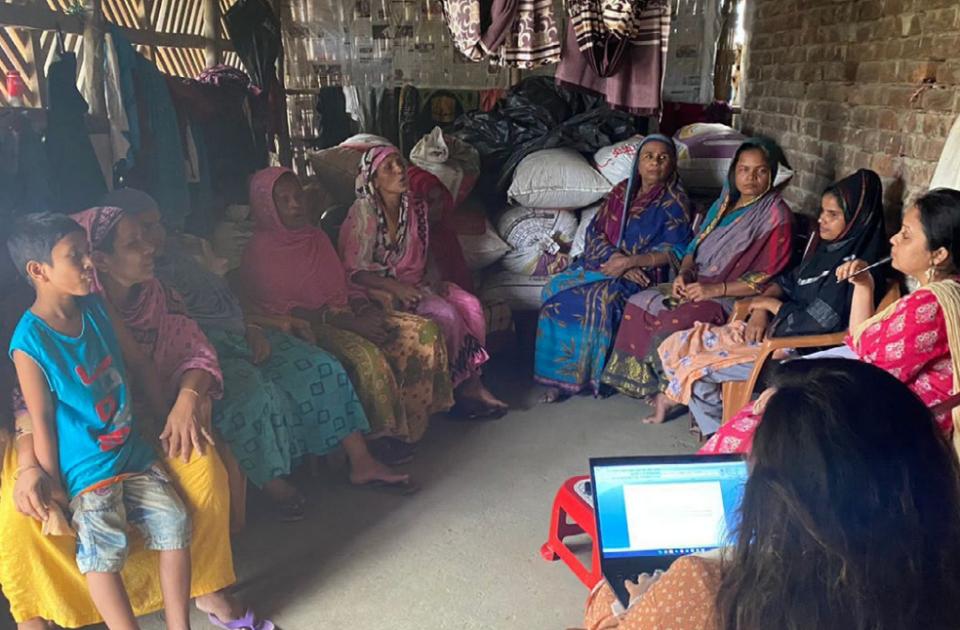
Scientists have now proven that human-caused increases in atmospheric concentrations of greenhouse gases, namely carbon dioxide, methane and nitrous oxide, have led to the atmosphere trapping more heat, resulting in increasing global temperatures. According to the latest IPCC report, “it is unequivocal that human influence has warmed the atmosphere, ocean and land.” Each of the last four decades has been successively warmer than any decade that preceded it since 1850. The likely range of total human caused global surface temperature increase from 1850–1900 to 2010–2019 is 0.8°C to 1.3°C, with a best estimate of 1.09°C.
How is the climate changing?
Higher average temperatures bring with them a cascade of dangerous impacts. These are no longer just projections or predictions.
After 30 years of scientific reports, the outcomes that scientists warned of back then are now observable facts, and we’ve reached a crisis point. Among the biggest impacts that we see are:
– Higher average and maximum temperatures
– Longer and more severe heatwaves, wildfires, and droughts
– Regionally varying changes in rainfall patterns leading to more extreme storms and floods, shifting monsoon seasons, and shifting agricultural calendars
What are the impacts on the environment?
Disruptions to our oceans
Warmer atmospheric and ocean temperatures are melting the Antarctic and Greenland ice sheets, causing sea level rise. Global sea levels have increased by 20 cm in the past 100 years and, depending on our emissions levels, are projected to rise by an additional 50 cm-2m by 2100. This, together with more intense storms, leads to a greater risk of flooding and erosion of coastal cities.
The rising ocean temperatures and atmospheric CO2 will cause further disruption to the oceans, by altering marine species distribution, bleaching coral reefs, acidification, disturbing the structure of the ocean layers, and reducing the ocean’s ability to act as a carbon sink, and draw carbon dioxide out of the atmosphere. Each of these impacts will be felt by humans, from disruptions to fishing livelihoods and food security, loss of essential ecosystem services that coral reefs provide to coastal areas such as absorbing storm energy reducing coastal erosion or flooding, or bringing in tourism.
Loss of Biodiversity
Extinction is a phenomenon that occurs naturally, but scientists estimate that current rates are 1,000-10,000 times faster than usual. If this continues, between one third and one half of all species could become extinct by 2050. The climate crisis is one of the main drivers of biodiversity loss, (along with habitat loss, over-exploitation of land, pollution of air, water and soil, and the spread of invasive species). Changes in temperature and water availability will affect species distribution.
Land degradation
The changing climate is degrading land through processes such as salinisation, as rising sea levels bring more salt inland, increase soil salinity, and devastate agriculture, as well as coastal erosion and desertification
What are the impacts on humans?
Food and Resource Scarcity
Shifting climate conditions and extreme weather events are reducing agricultural yields. Agriculture underpins the livelihoods of 2.5 billion people, most of them in low-income countries. The growing frequency and intensity of climate-related disasters is upending people’s lives, devastating livelihoods, and jeopardising regional food systems.
Conflict and Migration
According to a Brookings Institution report, in 2017, there were 68.5 million people living in the world who had been forcibly displaced, more than at any point in human history. It is difficult to quantify a global annual average for how much of this migration is caused by the climate crisis, because people often move temporarily, for multiple reasons, and their movement may not be recorded. However,
It is known that the climate crisis is contributing to increased disasters, and environmental processes such as desertification, sea-level rise, rain pattern shifts and loss of biodiversity, which exacerbate other humanitarian crises and lead to more people moving.
It is thought that in 2017, approximately one-third of migration (22.5 million to 24 million people) was due to sudden weather events—flooding, forest fires after droughts, and intensified storms. For example, Cyclone Idai in Mozambique uprooted 140,000 people within the country. It is important to note that most climate migrants are displaced within their
own countries or move to a neighbouring country. Only a small minority move to wealthier nations.
Climate Change and Conflict
There is growing evidence of links between the climate crisis and conflict. Of the 25 countries deemed most vulnerable to climate change, 14 suffer severe internal armed conflict. The direction of causation is unclear – in some contexts the climate crisis, by degrading land and water supplies, worsens competition for scarce resources, can exacerbate conflict; in other contexts, countries enduring conflict are less able to cope with the climate crisis; and in some contexts, both could be true, driving a vicious circle.
The Climate Crisis and Human Health
The climate crisis causes death and illness by exacerbating climate-related disasters, such as heatwaves, storms, and floods, and by worsening heart and lung diseases and asthma. According to The Lancet, heat-related deaths in the over-65s have increased by more than 50% in the past two decades. The climate crisis also contributes to the disruption of food systems, and increases food-, water- and vector-borne diseases. The World Health Organization estimates that between 2030 and 2050, climate change is expected to cause approximately 250,000 additional deaths per year, from malnutrition, malaria, diarrhoea and heat stress alone.
14/25 countries deemed most vulnerable to climate change, suffer severe internal armed conflict.
Disproportionate impacts on the world’s most vulnerable people
There are numerous reasons why the impacts of the climate crisis fall disproportionately onto the world’s most vulnerable people, including:
People living in poverty with lower savings are less able to rebuild homes and livelihoods after a climate-related disaster or to invest in protecting them beforehand. They also tend to live on the most dangerous land because it is the cheapest, such as flood plains and low-lying coastal areas. Small-scale farmers, fishers and foresters’ incomes are among the lowest globally, and are the most highly reliant on climate conditions. Marginalised groups, for example members of lower classes, caste, or minority ethnicities and religions, are typically the least protected by government policies such as those that provide access to disaster recovery aid and insurance, or invest in public works such as flood defences. Gender roles can determine differential access to nutrition, healthcare, and education when resources are scarce following a disaster, and differential responsibilities for community recovery.
Millions of people live in low quality housing within poor urban neighbourhoods. Here the urban heat island effect exacerbates the heatwaves that are driven by the climate crisis, and residents do not have access to the appropriate ventilation and sanitation.
Refugees and migrants living in makeshift housing have little protection against climate-related disasters such as floods and tropical storms.
Older people and the very young are physically more vulnerable to disasters such as heatwaves, extreme cold, and drought.
What could happen in the future?
- Up to 18% of species will become extinct.
- 143 million people are projected to become climate migrants.
- The European heatwave of 2003 which claimed 70,000 lives will be an average summer.
- Billions of people will suffer from inadequate access to water.
- Global wheat yields will be reduced by 12%
These impacts are not based on prediction or modelling; they are happening already. The future is projected to be worse.
According to the IPCC, a warming of 1.5 to 2 degrees above pre-industrial temperatures is the critical threshold at which the climate crisis becomes catastrophic. In the 2015 Paris Agreement, governments committed to keep the world within those limits. However, we are already at 1.07 degrees, and without significant changes in emissions, we are on track to reach 2 degrees before 2050. Reaching this temperature would mean:
More than 70 percent of Earth’s coastlines will see sea-level rise greater than 0.66 feet (0.2 meters), resulting in increased coastal flooding; dozens of cities including New York (population 8.5 million) and Karachi (population 15 million) would be subject to disastrous floods.
3. The impact of the climate crisis
on World Jewish Relief’s partner communities
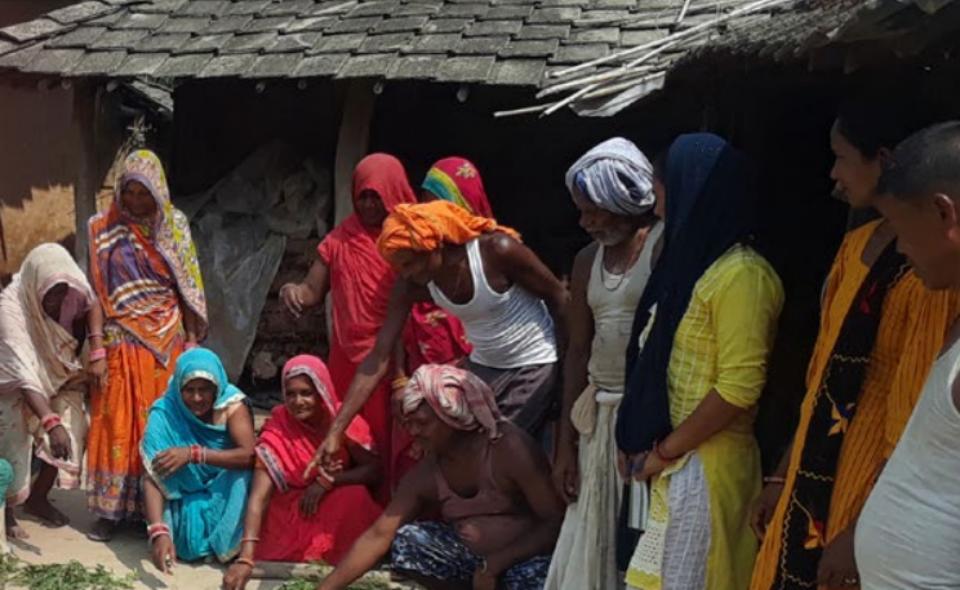
The effects of the climate crisis are felt most acutely in low and middle income countries that are less resilient to extreme weather impacts. Inevitably the most vulnerable people are predominantly hardest hit. World Jewish Relief already works with many such communities, including those dependent on rain-fed agricultural livelihoods, older people, and communities living in places that are badly affected by natural disasters. Below are a range of examples of how the climate crisis is affecting some of the communities that World Jewish Relief supports.
Effects on our work with older people living in Eastern Europe.
The climate crisis impacts in Eastern Europe include more extremely hot days and higher risk of heatwaves, more intense precipitation, and flooding, alongside the existing problem of extremely cold winters. Older people are especially vulnerable to the changing climate; they are more likely to suffer ill health during a heatwave (with a higher risk of respiratory problems, dehydration, and challenges accessing food or emergency medicine), they are less able to evacuate during a flood, and they may struggle to find financing to adjust their homes to heat extremes, or rebuild homes after a flood.
Participants in our programmes in Eastern Europe report some of these problems already. Many live in high rise, poorly built flats, which are difficult to keep cool.
This was especially severe during the Covid-19 lockdowns of summer 2021, when much of eastern Europe was hit by a record breaking heatwave. In Ukraine, a new highest temperature of 35.5 degrees was observed, surpassing a 136-year-old record. This summer crippling heatwaves will happen against a backdrop of war.
Our programme participants in Moldova were impacted by the 2020 drought, Moldova’s worst since 2000, which caused a 30% slump in agricultural production and widespread food shortages. Participants in our agricultural entrepreneurship programme were affected, but they were able to limit the impacts because they had diversified their crops so that at least some would survive extreme climate conditions, and by irrigating their land.
Effects on our work with livelihoods in
eastern Africa
The climate crisis impacts in eastern Africa include warmer temperatures, more intense heatwaves, more extreme rainfall and floods, and locust swarms, as well as higher rates of vector borne diseases such as Malaria and Dengue, and water borne diseases such as cholera and typhoid. But it is not just the disasters that are impacting people; smaller changes in average climate conditions are disrupting farming seasons, and therefore food security and income. Several of these impacts have already been reported by World Jewish Relief’s programme participants. For example, farmers in Wajir, Northern Kenya have lost incomes and food security during a recent drought, while successive flooding in Rwanda has seen severe outbreaks of several diseases such as bacterial wilt and late blight that have damaged crops. In Uganda, our farmers were relatively resilient to the later than expected rains and severe flooding in the Mbale area in 2019, as they had been planting green pepper crops that are resilient to strong rains.
Recent World Jewish Relief Emergency Response to Climate-Related Disasters:
Emergency response is a core element of World Jewish Relief’s work. In recent years, our emphasis in this area has increasingly focused on responding to climate-related disasters.
Tropical Cyclone Idai, Mozambique,
2019 – response and recovery
In March 2019, Tropical Cyclone Idai struck Central Mozambique and parts of Zimbabwe and Malawi, killing more than 1,000 people and affecting 3 million. Mozambique was worst hit, as flooding destroyed hundreds of thousands of homes and two million acres of crops. World Jewish Relief launched a rapid humanitarian response, partnering with a trusted local NGO called ADPP Mozambique (Aid for the Development of People for People). World Jewish Relief stayed on to deliver long-term livelihood recovery programmes for those affected by the disaster. Working with small farming clubs, we are providing seeds and livestock, infrastructure reconstruction such as water tanks, and technical support to mitigate the impact of future cyclones.
To prevent human suffering, the world needs to drastically reduce greenhouse gas emissions, known as climate change mitigation, and scale up efforts to adapt to the changes that we cannot prevent.
What else can we do about the Climate Crisis?
The graph below* shows the sectors that mitigation efforts need to focus on. The major ways to reduce GHG emissions are: Replacing carbon-intensive fossil fuels, coal, natural gas, and oil used to generate electricity, with carbon-free renewable sources of electricity generation, solar, wind, hydro power, and waves. The challenge is to do this in an efficient and cost-effective way. Replacing fossil fuel powered vehicles with low-carbon alternatives such as electric powered vehicles, with electricity
generated from renewable sources. Flying less, until an alternative low-carbon fuel source is developed for powering aviation.
Installing smart building technologies that use less energy for heating and cooling; changing consumer habits to waste less energy in homes and offices.
Reducing global consumption of meat and dairy and replacing with plant-based diets. Stopping deforestation and planting new trees. Trees are “carbon sinks” which means that they absorb CO2. These steps represent immense changes in our economies, societies, and way of life. They require transformative choices by businesses across the economy as well as planning, coordination, and implementation by governments on a national and international level.
What can Jewish communities do to reduce their contribution to the climate crisis?
The global transformations needed to reduce emissions require large-scale action by governments and corporations.
However, individuals and communities are not powerless to affect the climate crisis. The most significant actions that the British Jewish Community can take, are to:
Support the British Jewish community’s climate initiatives aimed at addressing the climate crisis in the UK and overseas, some of which are outlined below. Start conversations about climate science the impacts on humanitarian crises, and options for climate mitigation and adaptation, within our social circles, among business associates, and through public policy advocacy.
Adopt lifestyle choices that support the options outlined above, for mitigation of GHG.
4. Jewish Communal Initiatives
Addressing the Climate Crisis
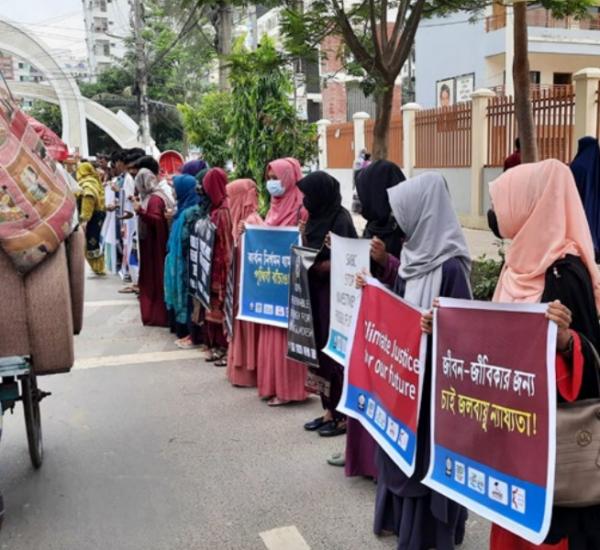
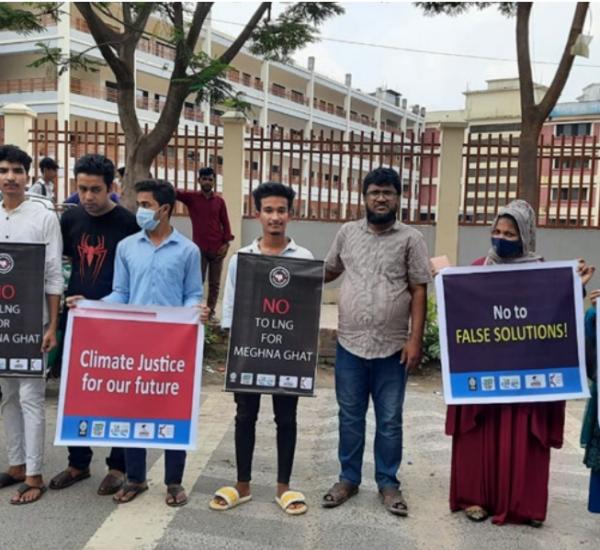
In recent years the Jewish community has led the way, in partnership with other faith groups, in highlighting the dangers of the climate crisis, advocating for change at all levels, and developing practical steps people can take to play their part. World Jewish Relief is proud to work in partnership with some of these initiatives, combining our areas of expertise to tackle this issue, which requires collaboration. Below are a few of the Jewish community initiatives addressing the climate crisis:
Eco-synagogue
Jewish communities can take action to ensure that their activities and assets are environmentally responsible. The UK cross-communal Eco-Synagogue initiative gives synagogues a simple and actionable road map for achieving this, across thesmajor areas:
– Community (Synagogue) Management commitment.
– Prayer & Teaching.
– Lifestyle.
– Land, Buildings & Consumables.
– Community & Global Engagement.
Dorot
Dorot (meaning ‘generations’) is an ambitious new climate initiative launched by the Office of the Chief Rabbi and the United Synagogue aimed at reducing their environmental impact. It is comprised of seven projects which will be rolled out over 2022: Tree planting for each of their 37,000 members to sequester carbon dioxide from the air. This will be part of the Queen’s Green Canopy project for the Queen’s Jubilee Celebration. The phasing out of disposables from United Synagogue nurseries, shuls and offices, reducing the amount of plastic sent abroad by the UK where it is often dumped or burned.
The rewilding of unused United Synagogue land to encourage biodiversity and provide a home for wildlife. An environmentally aware investment portfolio. More environmentally friendly travel arrangements. Conducting an energy audit for each synagogue, and develop smart energy solutions. Raise awareness about responsible food consumption: how can the choices we
make for breakfast, lunch and dinner better impact the planet?
Interfaith organizations
With over five billion followers and deploying vast resources, the world’s major religions are increasingly recognised as a powerful source of activism on the climate crisis. Interfaith organisations such as the Alliance for Religions and Conservation, and its successor, FaithInvest are mobilising the world’s religions to take action on the climate crisis. Within such initiatives, Judaism has a significant moral voice as the oldest major faith and the progenitor of Christianity and Islam, which have over three billion adherents.
5. World Jewish Relief’s Work to Address the Climate Crisis
Acting strategically to make a difference
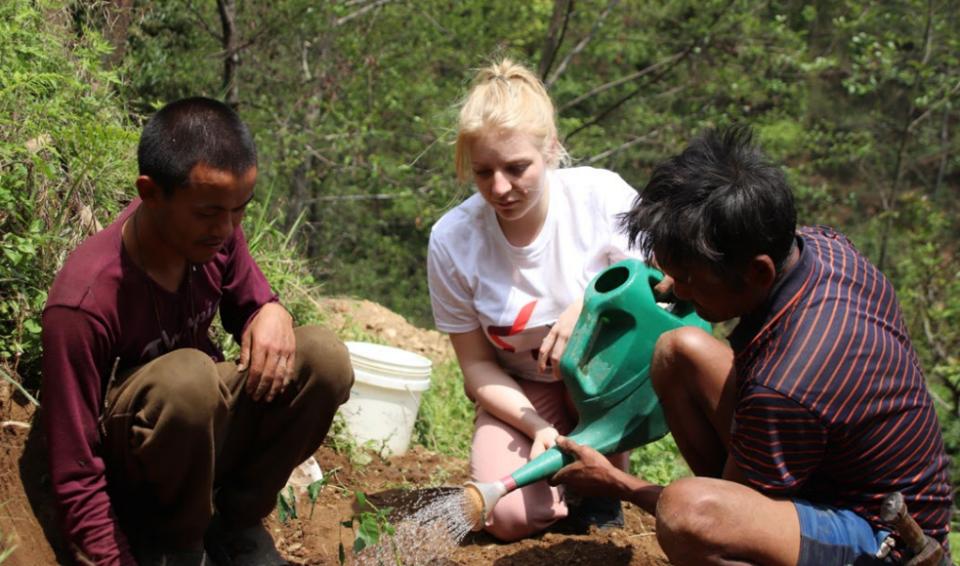
World Jewish Relief recognises the urgent humanitarian and Jewish imperatives to do everything it can to protect some of the world’s most vulnerable people from further suffering due to the climate crisis.
We are therefore working towards three main goals:
1. Partnering with local organisations in high climate risk countries, to implement Climate Resilience Programmes that enable communities to cope with the changing climate patterns.
2. Ensuring that every one of World Jewish Relief’s partners and programmes are considering environmental impacts when designing new livelihoods or humanitarian projects.
3. Measuring and reducing our own carbon footprint, to minimise our contribution to the problem.
We have launched three pilot programmes which are supporting communities that are being hit by intensifying floods, droughts, landslides and disruptions to their farming livelihoods. They are in a particularly vulnerable position to start with, as they cannot legally own their own farmland due to caste or gender discrimination, or because they have already had to move suddenly due to flooding or conflict. Our core aims of the pilot programmes are to strengthen communities’ capacities to cope with the climate crisis, but critically: to learn. Once we have established which activities work best, we plan to scale up.
Most of the communities that we are working with have never been supported to strengthen their climate resilience before, so we have started by assessing:
– How the climate has changed, including which hazards are intensifying and how seasonal agricultural calendars are shifting
– Which assets in the community are being affected, including shelter, livestock, crops, seed storage facilities, water, forest resources, human health, and income
– How people are being affected differently, for example by gender or citizenship status
– What existing skills, resources and networks the community can use, or which additional skills, resources and networks they should acquire, to cope with the changes.
Most of the communities that we are working with have never been supported to strengthen their climate resilience before, so we have started by assessing:
– How the climate has changed, including which hazards are intensifying and how seasonal agricultural calendars are shifting
– Which assets in the community are being affected, including shelter, livestock, crops, seed storage facilities, water, forest resources, human health, and income
– How people are being affected differently, for example by gender or citizenship status
– What existing skills, resources and networks the community can use, or which additional skills, resources and networks they should acquire, to cope with the changes.
Acknowledgements
This report was commissioned by World Jewish Relief. Rabbi Yedidya (Julian) Sinclair consults on environmental and social compliance for infrastructure projects in the developing world. Previously, he was Vice President and Senior Economist at Energiya Global, a Jerusalem-based solar energy company focused on Africa. Yedidya is also a rabbi and co-authored the 7-year plan for the Jewish people on climate and environment for UNDP. Yedidya served as Senior Rabbinic Scholar at Hazon, the leading US Jewish environmental organization and was Jewish Chaplain at Cambridge University where he also taught in the Divinity School. He holds a BA from Oxford University, an MPA from the Kennedy School of Government at Harvard and lives with his family in Jerusalem. World Jewish Relief is also grateful to Rabbi Johnathan Wittenberg, who provided the foreword, and to the Pears Foundation, who have part funded their climate resilience work.
The report was designed by NONplussed, led by Poppy Macfarlane and Eve Cox.




